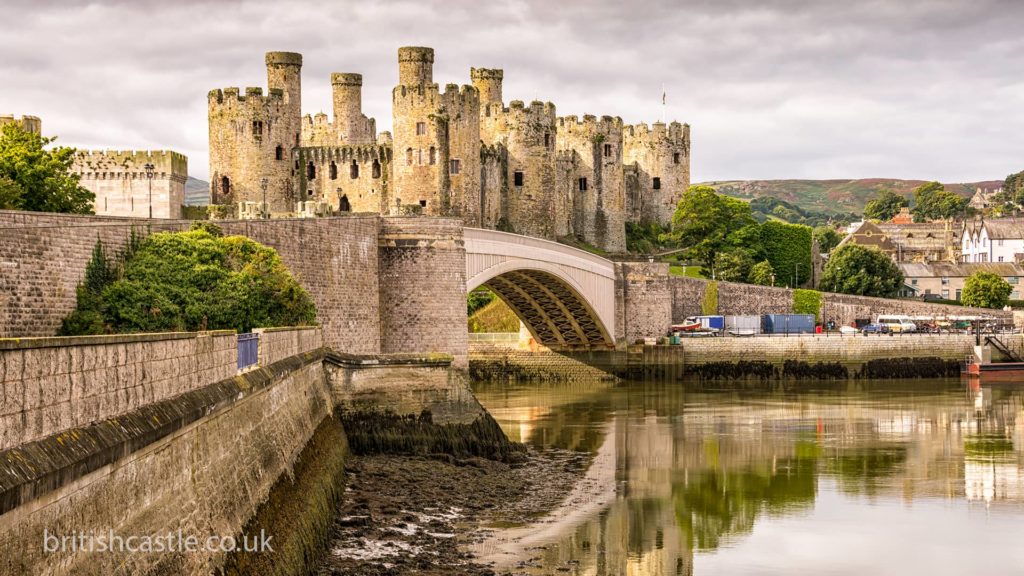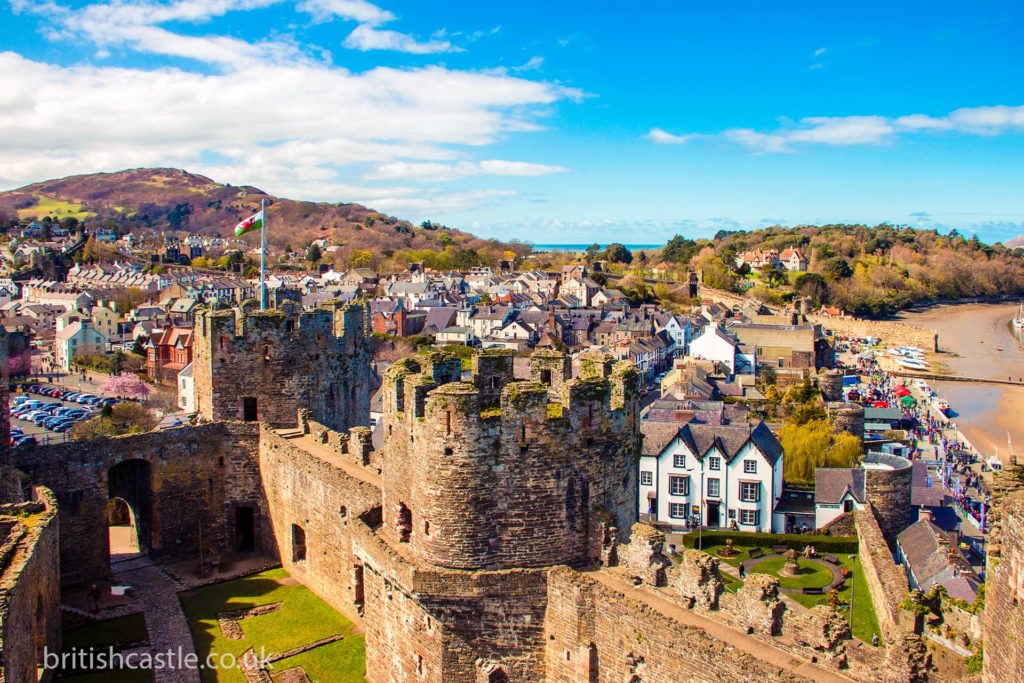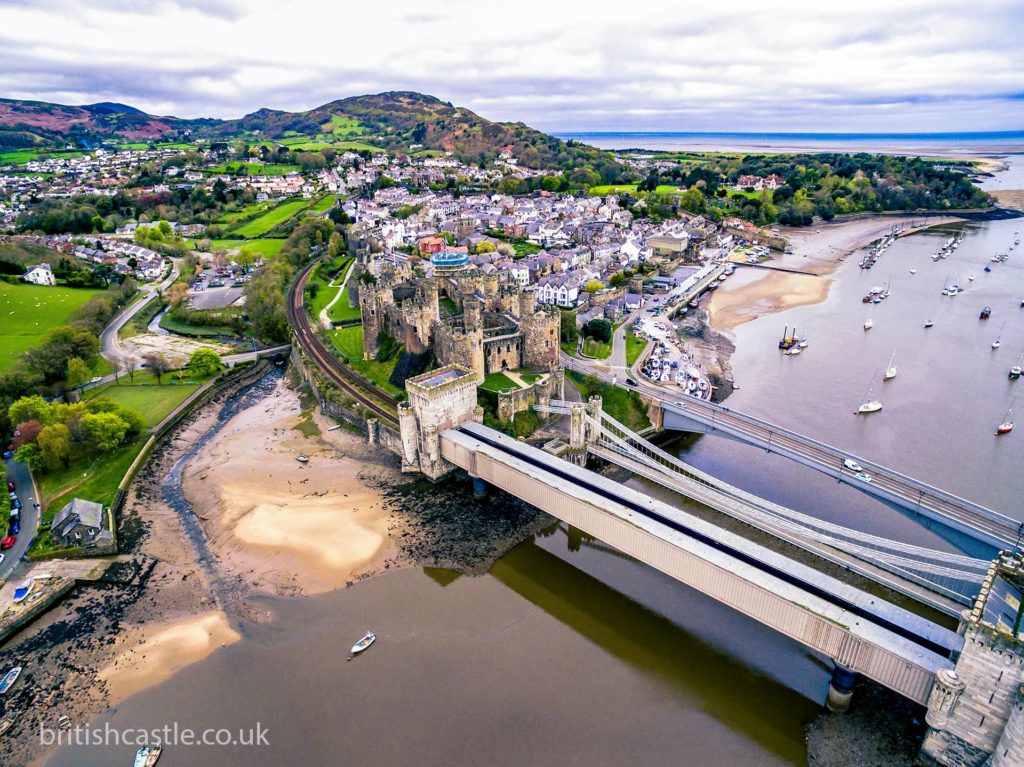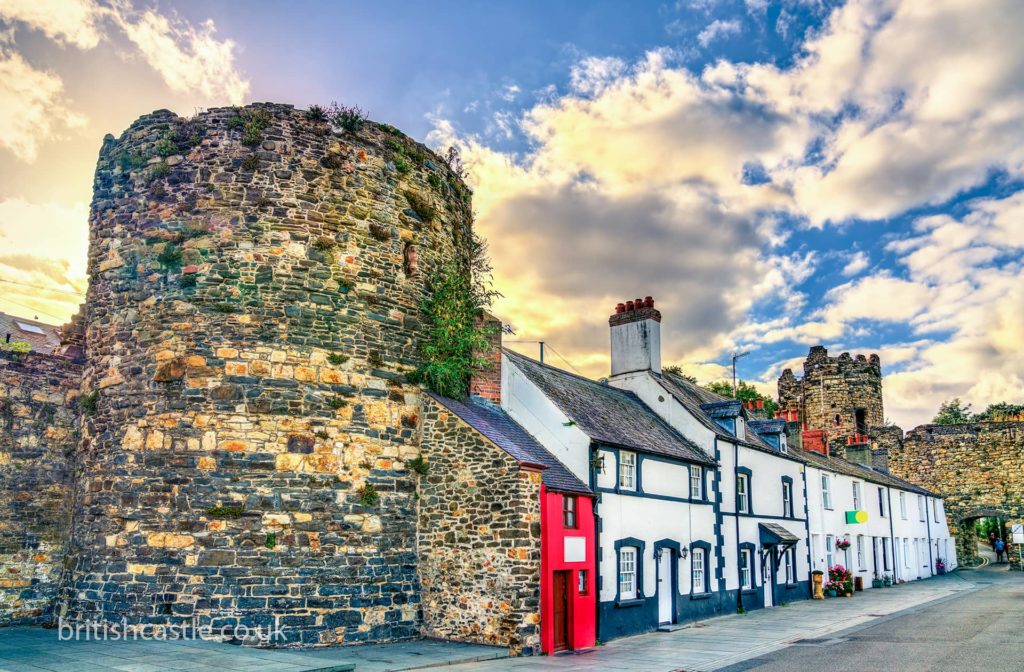Built between 1283 and 1287, Conwy Castle, located aptly enough in the Conwy valley of North Wales, holds a unique place in European history. Not only for its strength and resilience as a Medieval fortress that still stands to this day––not even for its weighty and sound work of military architecture––but also for the countless sieges and battles with which the expansive structure is associated.

Deemed one of “the finest example of late 13th-century and early 14th-century military architecture in Europe” by UNSECO, Conwy Castle, like many of the other structures built as part of the Castles and Town Walls of King Edward I in Gwynedd, is regarded as the pinnacle of English engineering throughout the eponymous monarch’s reign.
Edward I
Since 1070, the Welsh princes had been feuding with the kings of England for control of North Wales––and these hostilities had resurfaced during the 13th century: an English-led invasion was inevitable.
In 1282, England’s King Edward I, working alongside royal architect James of St. George, led the brutal charge into Wales––with the support of a massive army of soldiers––pushing north from Carmarthen, eventually gaining control of the Conwy valley and capturing Aberconwy Abbey, the site of a Cistercian Monastery favoured by the Welsh princes.

This location, it was determined, would become the central hub of a brand-new county, with a new English castle and walled town as its epicentre. In fact, the decision to build in this particular area, upon such a sacred native site as the former monastery, was largely symbolic of England’s unreachable power.
But it was not only the site at Conwy that the king and his master mason had in their sights. They also took advantage of the Welsh landscape and began to dot the northern area’s hills and valleys with multiple fortresses, creating reinforced towns in which colonised English immigrants could settle.
James of St. George
Despite his affiliation with Edward’s kingdom, there is little known about the early life and times of Master James of St. George, other than the leftover castles and walls bearing his name. Considered to be one of the master architects of the European Middle Ages, his association with Conwy and Edward remains his most celebrated achievement.
The son of a master mason from Savoy, the cultural region in the Western Alps (today, the Savoy region is broadly divided by the French-Italian border), James of St. George learned the craft and became a respected designer in his own right. By 1270, he was responsible for the construction of many of the castles built at the behest of Philip I, Count of Savoy in the Viennois commune.

This association with royalty is, presumably, how he made the transition from mainland Europe to the court of Edward I––the earliest references in the English records of Master James of St. George date to 1278, where he is described as ‘going to Wales to put in order the works of the castles’.
James of St. George was appointed Master of the Royal Works in Wales around 1285, giving him full control of the construction of all fortresses, including Conwy Castle, but also Caernarfon Castle and Harlech Castle. Noticeably, the design of all of these buildings shares a unique and mostly uniformed style––one that features a heavy, Savoy-Norman French influence.
Flourishes aside, nearly all of the Welsh castles and the ring of town walls built by James of St. George have survived centuries of battle, age and weather, and remain today mostly intact.
Conwy Castle construction
Unlike most of the king’s other new castles in Wales, Castle Conwy included a relatively unique plan in that it was not built to the traditional concentric scheme, but rather a divided rectangular layout.
Due to the nature of the rock outcrop, a strong linear outline was featured, one with a lower barbican outwork at each end. Conwy’s interior was divided into two distinct wards by a cross-wall so that either side could hold out independently should the other fall.
The castle abuts a coastal ridge of sandstone and limestone rock––much of which was used for the building’s construction. In fact, Castle Conwy’s eight mighty towers, a defining characteristic, look as though they emerge from the very rock upon which the fortress was carved.
The original main entrance to Conwy’s outer ward was through the west barbican, which was defended by a drawbridge and a portcullis gate. Inside the ward, the towers offered accommodation for the garrison, while in the base of the soaring Prison Tower sat the castle dungeon.
At 125 feet long, the building’s Great Hall, made necessary by the rocky foundations, dominated the outer ward. Original decorations, including intricate framework and windows, made it the perfect backdrop for royal functions and dinners.
Despite its beauty, the main function of Conwy Castle was protection, as evidenced by another drawbridge beyond the castle wall, which was built to further secure the entrance to the inner ward, which was the undisputed hub of the entire fortress.
This internal recessed area housed the private apartments of the king and queen and included another grand hall as well as a formal presence-chamber for receiving guests, while the King’s Tower provided additional private rooms to visitors and foreign dignitaries––however, all of these grandiose features have since fallen, and only the shells of the once ornate windows remain, giving some indication of the former luxury contained within.
Upon completion, Conwy’s walls would have been coated with a stark white plaster rendering, the likes of which would have been in sharp contrast to the grey stonework in place today––although some traces of this plasterwork can still be found in crevices along the outer walls.
Conwy through the years
According to a royal charter signed in 1284, the constable of Castle Conwy also became the mayor of the new town of Conwy (to this day, the Mayor of Conwy is also the ex-officio Constable of the Castle).
At the time of this decree, the resident constable oversaw a castle garrison of 30 soldiers, including 15 crossbowmen, as well as a chaplain, a blacksmith, a stonemason and resident carpenter. It is believed that these were also the inhabitants of Conwy Castle when Edward was besieged in 1294 by Madog ap Llywelyn, leader of the Welsh revolt against the English.
Uprisings aside, Conwy Castle formed the main residence for visiting senior figures for years to come, even hosting Edward’s son, the future Edward II, in 1301.
Astonishingly, a mere 35 years after its completion, Castle Conwy was considered run down and poorly equipped for service, according to a 1321 survey. Minor repairs were performed by the resident chamberlain, but it wasn’t until Edward, the Black Prince (eldest son of Edward III) took control of the fortress in 1343 that Conwy Castle was temporarily restored––only to return to its poor state following the Black Prince’s death.
By the end of the 14th century, Conwy Castle was used as a refuge by Richard II (son of Edward, the Black Prince) as he fled from his rival, Henry Bolingbroke––who, after forcing Richard II’s abdication, would become England’s King Henry IV from 1399 to 1413.
Conwy Castle also served as a backdrop for much of the infighting between the Lancastrians and the Yorkists during the War of the Roses between 1455 and 1485. Following a further extended state of disrepair, King Henry VIII would conduct much-needed restoration work on the structure during the 1530s, during which time Conwy Castle was used primarily as a prison.
Conwy Castle saw less physical action from the early 17th century onwards, and instead experienced considerable administrative upsets, changing ownership from one monarch to another, namely during the English Civil War of 1642. More European families would claim the title to Conwy Castle well into the 1800s––but not until 1953, when the castle was leased to the UK’s Ministry of Works, was Conwy Castle repaired and restored to its mostly current condition.

By then already a scheduled monument, Conwy Castle was declared a UNESCO World Heritage Site as part of the Castles and Town Walls of King Edward in Gwynedd in 1986. Today, the castle is managed by Cadw, part of the Welsh government’s Tourism and Culture group, which offers visitors the opportunity to explore the grounds as part of numerous travel packages.
For anyone visiting North Wales, Conwy Castle is an ideal destination for touring due to its proximity to the River Conwy and Snowdonia Park. It receives tens of thousands of tourist visitors each year and features regular maintenance and repairs averaging at around £30,000 each year––a far cry from the original £15,000 (not adjusted for inflation from 1282 money) spent during its initial construction.
What to learn more? Find out what castles are in our associated article.